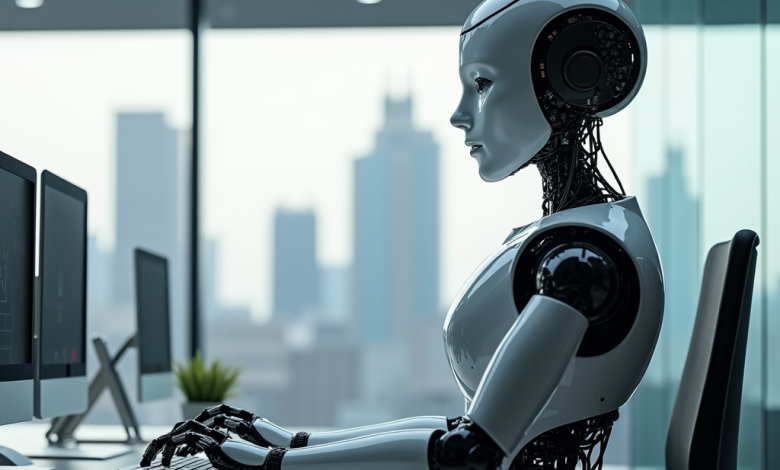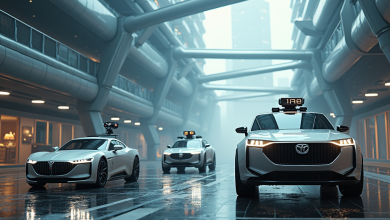Nvidia Launches Groot N1: Advanced Humanoid Robot Model

Nvidia Unveils Groundbreaking Groot N1 Foundation Model for Humanoid Robots
Nvidia Corporation has made a significant leap in embodied AI with the announcement of Groot N1, a groundbreaking foundation model for humanoid robots. This development, unveiled at GTC 2025 in San Jose, represents a major investment in generalist robotics aimed at addressing global labor shortages.
Key Features of Groot N1
Groot N1 boasts several innovative features that set it apart:
Dual-System Architecture
Inspired by human cognition, Groot N1 combines:
– A fast thinking system (System 1) for rapid decision-making and action execution
– A slow thinking system (System 2) for deliberate reasoning, planning, and complex problem-solving
Cross-Embodiment Capabilities
Groot N1 is adaptable to various humanoid robot platforms, increasing its versatility and potential applications [1].
Comprehensive Training Data Strategy
The model utilizes a combination of:
– Synthetic data
– Real robot data
– Internet-scale video data
This approach ensures Groot N1 can learn from a wide range of sources, improving its ability to generalize and adapt to new situations [4].
Open-Source Approach and Industry Partnerships
Nvidia’s decision to open-source Groot N1 marks a significant shift in the AI and robotics landscape. This approach fosters a collaborative ecosystem that could accelerate innovation in the field [5].
Partnerships with industry leaders such as Google DeepMind, Disney Research, and prominent humanoid robot developers further support this open ecosystem [5].
Potential Impact on Labor Markets
With global labor shortages estimated at over 50 million workers, humanoid robots powered by Groot N1 could help fill critical gaps across various industries. Applications range from material handling and packaging to inspection and domestic tasks [1] [4].
Supporting Technologies
NVIDIA Isaac GR00T Blueprint
This powerful tool generates synthetic data essential for training and refining the model. It can produce over 750,000 synthetic trajectories in just 11 hours, equivalent to 6.5K hours or nine continuous months of human demonstration data [4].
Newton Physics Engine
This open-source engine offers realistic robot training environments, further enhancing the capabilities of Groot N1-powered robots [4].
Future Developments and Challenges
As Groot N1 continues to evolve, Nvidia plans to release future iterations and improvements. The integration of Groot N1 with other Nvidia technologies promises to create powerful synergies that could further advance humanoid robotics [5].
However, challenges remain:
– Ethical concerns
– Regulatory hurdles
– Public acceptance of humanoid robots
Addressing these issues will be crucial for realizing the full potential of Groot N1 and similar advanced AI models in robotics.
Conclusion
Nvidia’s Groot N1 represents a monumental step forward in the development of generalist humanoid robots. By combining advanced AI techniques with an open-source approach, Nvidia has laid the groundwork for a new era of robotics that could help address global labor shortages and transform various industries.
As we move forward, the integration of Groot N1 with other cutting-edge technologies and its ongoing evolution will likely play a crucial role in shaping the future of work, industry, and human-robot interaction. While challenges remain, the introduction of Groot N1 marks a significant milestone in our journey towards creating truly versatile and capable humanoid robots. The real question lies in how effectively we can harness these innovations to create a collaborative future with humanoid robots, given the potential to redefine numerous facets of work and everyday life.




